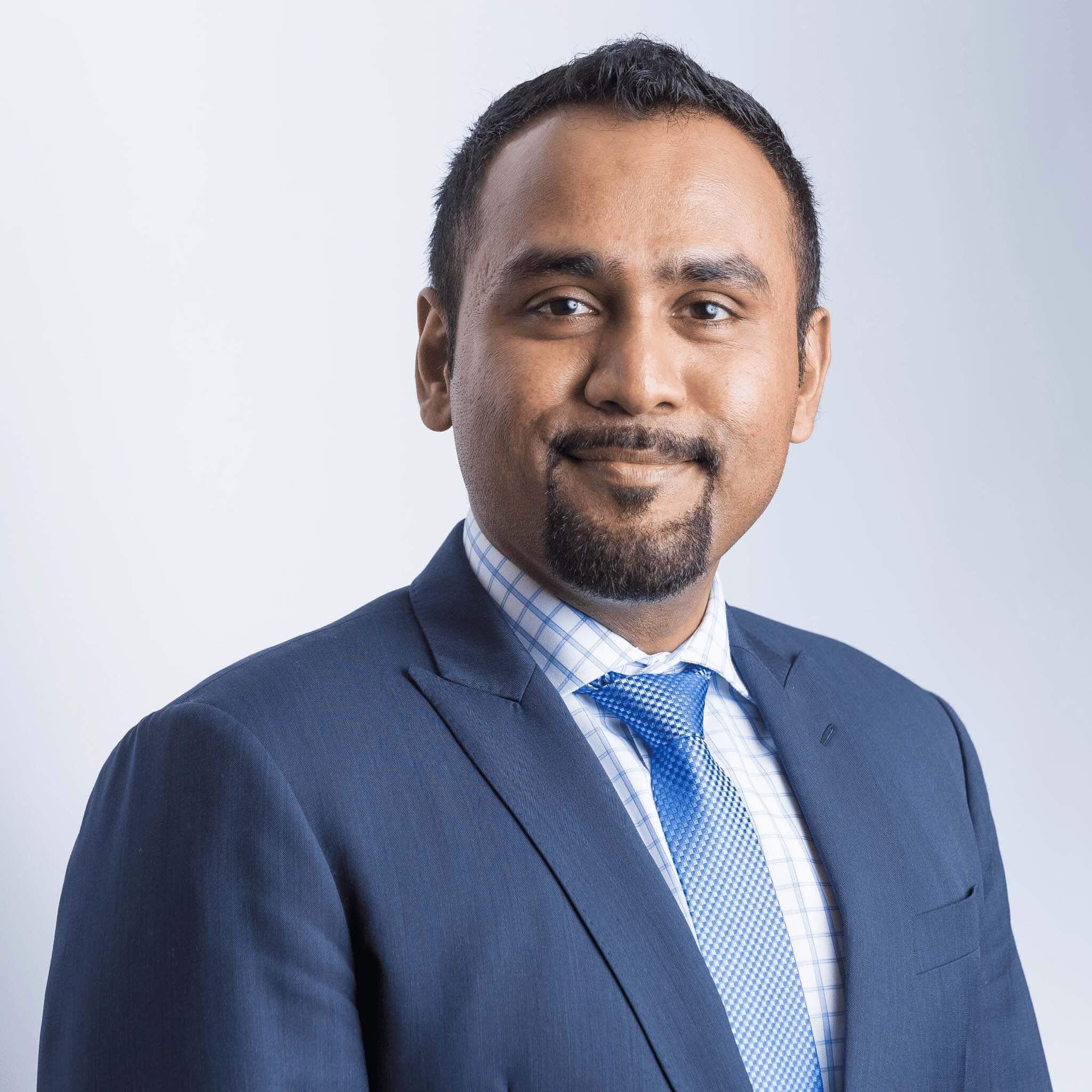What is an endoscopic sleeve gastroplasty?
An endoscopic sleeve gastroplasty (ESG), also known as an accordion procedure, is a minimally invasive, non-surgical weight loss procedure that aims to reduce the size of the stomach using an endoscope. This procedure is designed for individuals who need to lose weight but may not be suitable candidates for traditional weight loss surgeries like a gastric bypass or a sleeve gastrectomy.
During an ESG, a flexible tube with a light and camera (endoscope) is inserted through the mouth and into the stomach. The endoscope allows the surgeon to visualise the inside of the stomach and perform the procedure without making any incisions in the abdomen. The procedure typically involves suturing or stitching the stomach from the inside to create a smaller, banana-shaped pouch. This reduces the stomach’s capacity, helping patients feel full with smaller amounts of food.
The main goals of an ESG include restricting food intake, promoting early satiety, and ultimately aiding weight loss. Since it is a less invasive procedure compared to traditional weight loss surgeries, the recovery time is generally shorter, and there is usually less postoperative pain.
What is an endoscopic sleeve gastroplasty meant for?
An ESG is primarily intended for individuals who are struggling with obesity and are seeking an effective, minimally invasive approach to weight loss.
The procedure is meant for the following purposes:
Weight loss
The primary goal of an ESG is to allow significant and sustained weight loss in individuals with obesity. By reducing the size of the stomach, the procedure helps restrict the amount of food that can be consumed, promoting weight loss.
Obesity management
An ESG is designed to address the challenges of obesity and provide an alternative for individuals who may not be suitable candidates for traditional weight loss surgeries or patients who prefer a less invasive approach.
Health improvement
Undergoing an ESG can not only lead to improved obesity-related health conditions but also bettered control of type 2 diabetes, reduced risk of cardiovascular diseases, and an alleviated state of conditions such as sleep apnea.
Metabolic health
ESG procedures may positively impact metabolic health by contributing to better insulin sensitivity and glucose control, which are particularly relevant for individuals with obesity-related insulin resistance or type 2 diabetes.
A minimally invasive approach
Those who prefer such an approach, as opposed to traditional weight loss surgeries which involve extensive surgical intervention, may opt for an ESG for shorter recovery times and reduced postoperative discomfort.
An alternative to surgery
For individuals who may not be comfortable with traditional measures for surgical weight loss procedures or who wish to avoid surgery, undergoing an ESG provides a viable alternative to achieve significant weight loss.
It’s important to note that ESG is not a one-size-fits-all solution and its suitability for an individual depends on various factors, including overall health, medical history, and weight loss goals. Individualised medical assessments are crucial to determine the most suitable approach for each person’s unique health circumstances.
What conditions does an accordion procedure help tackle?
An accordion procedure is undertaken to address the challenges of weight management and mitigate the potential health risks associated with excessive weight or obesity. That said, the following are conditions an ESG can help tackle:
Obesity
An ESG is designed to assist individuals with a body mass index (BMI) in the obese range in achieving significant weight loss and reducing the future-borne complications of obesity.
Cardiovascular conditions
Individuals at an increased risk for cardiovascular problems, such as heart disease or stroke, can undergo an ESG to help manage weight and reduce cardiovascular risks.
Metabolic conditions
Obesity is most often linked to metabolic disorders, such as type 2 diabetes. Conducting an ESG may contribute to better blood sugar control and the management of diabetes.
Hypertension (high blood pressure)
Obesity is a common contributor to elevated blood pressure and undergoing an ESG aims to reduce overall body weight, which may positively impact blood pressure levels.
Dyslipidemia (high cholesterol)
Obesity can lead to high cholesterol levels, and undergoing an ESG examination may aid in weight loss, which can assist in potentially lowering the levels of cholesterol.
Joint pain and osteoarthritis
Excess weight can strain joints, leading to pain and conditions like osteoarthritis. Since an ESG promotes weight loss, it may alleviate joint pain and improve body mobility.
Liver conditions
Nonalcoholic fatty liver disease (NAFLD) and Nonalcoholic steatohepatitis (NASH) are conditions associated with obesity, but undergoing an ESG can improve liver health and functionality.
Sleep apnea
Sleep apnea is when your breathing stops and starts while you sleep. This is a significant risk factor for obesity, but an ESG can help contribute to weight loss and alleviate symptoms.
It’s important to note that ESG is not a one-size-fits-all solution and its suitability for an individual depends on various factors, including overall health, medical history, and weight loss goals. Individualised medical assessments are crucial to determine the most suitable approach for each person’s unique health circumstances.It’s important to note that ESG is not a one-size-fits-all solution and its suitability for an individual depends on various factors, including overall health, medical history, and weight loss goals. Individualised medical assessments are crucial to determine the most suitable approach for each person’s unique health circumstances.
What are the after-effects of an accordion procedure?
Short-term effects include:
- Dietary changes: Individuals will need to make dietary adjustments. Initially, a liquid or soft diet may be recommended, gradually transitioning to solid foods as tolerated.
- Potential side effects: Individuals may experience temporary side effects such as nausea, vomiting, or abdominal pain during the initial days or weeks after the procedure.
- Follow-up appointments: Regular follow-up appointments are essential to monitor progress, address any concerns, and provide guidance on diet and lifestyle changes.
Long-term effects include:
- Improved health conditions: Improvements in obesity-related health conditions, such as better control of type 2 diabetes, lower blood pressure, and improved lipid profiles.
- Dietary habits: Individuals are encouraged to adopt healthier eating habits, including portion control, choosing nutrient-dense foods, and developing a well-balanced diet.
- Lifestyle changes: Adopting lifestyle changes, including improved dietary choices, increased physical activity, and ongoing healthcare support from professionals.

Speak to a specialist about getting an accordion procedure
It’s essential for individuals undergoing an ESG to follow the postoperative care plan provided by their healthcare team and actively participate in lifestyle changes to optimise the benefits of the procedure. Prioritising your health through preventive measures is a wise decision and seeking timely medical advice can play a crucial role in maintaining overall well-being.
Consider reaching out to Dr. Suhirdan Vivekanandarajah, an experienced gastrointestinal specialist located in Sydney, Australia with extensive expertise in various facets of gastroenterology. Scheduling a consultation with Dr. Suhirdan is a proactive step towards understanding and managing your gastrointestinal health. Act now to prioritise your well-being and receive personalised care from a highly experienced specialist.
FAQs

The actual procedure for an ESG typically takes about 60-90 minutes to complete. However, the overall duration of your experience may vary when considering pre-procedure preparation, recovery time, and post-procedure monitoring.
An ESG is generally safe; however, reversibility is limited, and dietary and lifestyle changes are crucial for success. Potential complications include bleeding or infection, although these risks are lower than in traditional surgeries. Also, long-term outcomes and insurance coverage may be less established, and not everyone is a suitable candidate. Before choosing an ESG, individuals should discuss these factors with their healthcare provider to make an informed decision.
Both procedures aim to reduce stomach size, leading to early satiety and weight loss. The choice between a gastric sleeve and an ESG depends on factors such as individual health, preferences, and the extent of invasiveness one is willing to undergo. Consulting a healthcare professional can help individuals make informed decisions based on their specific needs and circumstances.
